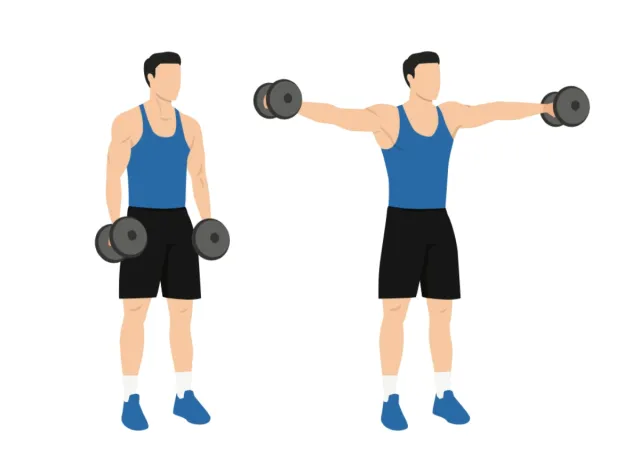
The immune system of the body begins attacking the nerves in Guillain-Barr Syndrome, a rare condition that can cause paralysis and other potentially fatal complications.
The Peruvian government on Saturday (July 8) declared a 90-day national emergency amid a sudden spike in cases of the rare neurological condition Guillain-Barr Syndrome (GBS). There have been an alarmingly high number of 165 cases in the nation, including four fatalities. According to reports, an epidemiological alert was issued on June 27 this year, to step up preventive, surveillance, and response efforts for the neurological condition.
C sar V squez, the minister of health for Peru, asked for the declaration of an emergency after issuing a warning last Wednesday, July 5. According to reports, the syndrome has affected at least one person in 18 of the 24 departments across the nation this year.
What Is Guillian Barre Syndrome?
Guillain-Barr syndrome (GBS) is a rare, autoimmune disorder where the body’s immune system incorrectly attacks the peripheral nerves. Muscle weakness, numbness, and tingling are just a few of the symptoms that can result from this nerve injury. These symptoms typically start in the legs and go up the body.
What Are The Symptoms of Gullian Barre Syndrome?
The symptoms of Guillain-Barre syndrome include:
- Tingling sensations in the fingers, toes, ankles, wrists, and sometimes even the arms and face.
- Weakness in the legs that spreads to the upper body, potentially resulting in an inability to walk or climb stairs, is common.
- In rare cases, affected individuals may experience difficulty in speaking, chewing or swallowing.
- Patients may also suffer from double vision or the inability to move their eyes.
- Severe pain, which can be described as achy, shooting, or cramp-like, often worsens at night.
- Challenges with bladder control and bowel function
- Rapid heart rate
- Low or high blood pressure
- Breathing difficulties.
- Weakness in muscles.
Guillian Barre Syndrome Alert Issued In Peru: Things You Need To Know
Here are 10 things that you need to know about this sudden outbreak and the rare condition:
- GBS is a rare disorder that affects the immune system causing it to attack the nerves of the body.
- In extreme circumstances, it might result in paralysis or even death. It can also induce muscle weakness.
- Most individuals affected by this condition require hospitalization for treatment.
- While the exact cause of Guillain-Barre syndrome remains unknown, reports suggest that two-thirds of patients exhibited symptoms of an infection, such as Covid-19, gastrointestinal infections, or the Zika virus, in the six weeks preceding the onset of the disorder.
- The condition can affect people of all ages, but it is more prevalent in adults and men.
- Although the actual aetiology of GBS is unknown, it is often triggered by infections, most commonly by a bacterium called Campylobacter jejuni.
- The symptoms and results of the patient’s neurologic examination are used to make the diagnosis of GBS.
- The symptoms of GBS can progress over hours, days, or weeks.
- The brain may get unusual sensory messages from the rest of the body because GBS damages the nerves. The medical term for this condition is paresthesias.
- The cause of Guillain-Barre syndrome is unknown. Treatments, on the other hand, might lessen the severity and length of the sickness while also assisting in treating the symptoms.
Guillain-Barre syndrome manifests in three different forms: acute inflammatory demyelinating polyradiculoneuropathy (AIDP), Miller Fisher syndrome (MFS), and acute motor axonal neuropathy. AIDP is the most common form found in North America and Europe, typically characterized by muscle weakness starting in the lower body and spreading to the upper body. MFS, less common in the United States but more prevalent in Asia, involves paralysis that begins with the eyes. Acute motor axonal neuropathy is more frequently observed in China, Japan, and Mexico.
READ RELATED: Rita Ora's Abs Workout Works and She Just Shared It
How Long Does It Take To Recover?
The majority of patients start recovering in two to three weeks, but for some, it may take several years to fully recover. While some individuals may fully recover from the illness, a small percentage develop chronic weakness, numbness, or exhaustion due to irreversible nerve damage.
The declaration of a national health emergency in Peru underscores the urgency of addressing the escalating cases of Guillain-Barre syndrome. It is crucial for healthcare professionals and researchers to work diligently in investigating potential causes, developing appropriate treatment protocols, and implementing preventative measures to safeguard public health.
Total Wellness is now just a click away.
Follow us on
Don’t Miss Out on the Latest Updates.
Subscribe to Our Newsletter Today!
window.addEventListener(‘load’, (event) => {
$(‘#commentbtn’).on(“click”,function(){
(function(d, s, id) { var js, fjs = d.getElementsByTagName(s)[0]; if (d.getElementById(id)) return; js = d.createElement(s); js.id = id; js.src = “//connect.facebook.net/en_US/sdk.js#xfbml=1&version=v2.3”; fjs.parentNode.insertBefore(js, fjs);}(document, ‘script’, ‘facebook-jssdk’));
$(“.cmntbox”).toggle();
});
});









